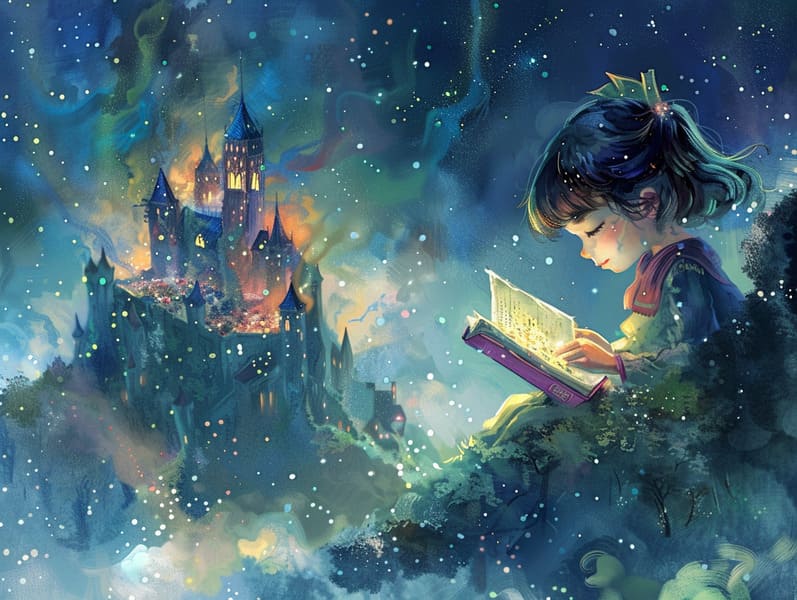The Start of Children's Fairy Tales and Their Consistent Mystique.
The Start of Children's Fairy Tales and Their Consistent Mystique.
Blog Article

Ancient fairy tales have timeless appeal. These tales have been told from one generation to the next well before they were ever published. They developed from a variety of traditions, including African traditions. They were initially shared among older generations, often carrying themes and messages mirroring the societal norms and beliefs of the time.
The renowned Brothers Grimm, Jacob and Wilhelm, were among the first to gather many of these beloved tales. Their anthology, "Grimm's Children's Stories," included stories like "The Little Glass Slipper," "Hansel and Gretel," and "Schneewittchen," which have since become classics in the world of famous fairy tales. Similarly, Hans Andersen's enchanting fairy tales, such as "The Mermaid," and "The Duckling that Could," have touched hearts worldwide, establishing their place in the pantheon of classic fairy tales.
Even though they are old, traditional fairy tales remain as impactful as ever, especially as children's bedtime stories. These delightful tales are now available in various formats, including vividly illustrated books, magical animations, and online fairy tales.
Their unwavering allure can be linked to several enchanting factors:
Moral Lessons: Ancient fairy tales often whisper important moral lessons. Tales like "The Story of the Boy Who Cried Wolf" teach the benefit of integrity, while "The Tale of the Tortoise and the Hare" show the benefits of determination and humbleness. These tales offer young ones clear distinctions between good and bad, molding their moral compass in a gentle yet deep way.
Kindness and Comprehension: Classic fairy tales frequently include characters facing trials and tribulations, prompting kids to comprehend with their struggles and boost their triumphs. For instance, "The Story of Beauty and the Beast" highlights the benefit of looking past the exterior to perceive the true being of a character, cultivating empathy and appreciation.
Cultural Appreciation: Many timeless fairy tales are saturated in the cultural contexts from which they emerged. Immersing in these fairy tales can provide captivating looks into different social structures, advancing a sense of cultural awareness and comprehension.
Fantasy and Innovation: The whimsical elements in ancient fairy tales—magical kingdoms—foster children’s imaginative ideas. These fairy tales lead readers to supernatural realms, kindling innovative thinking and a sense of fascination that stays a lifetime.
Timeless fairy tales are not only fantastical but also didactic. They provide fantastical tools in enhancing various mind and heart abilities in kids. When fairy tales are spoken out loud, they foster language acquisition by introducing new lexicon and detailed sentence structures. This practice also cultivates auditory skills and attentiveness, as the young focus on every detail, eager to see what happens next.
Furthermore, conversing about the themes and characters of these guys fairy tales can enhance thought processes and reasoning skills. Little ones are shown to recognize patterns, make predictions, and get cause and effect. These contemplations also further children verbalize their thoughts and feelings, advancing their emotional intelligence.
In today’s electronic age, the proliferation of digital storybooks has made these stories more within reach than ever. Websites and online apps give wide arrays of popular fairy tales that can be looked at or listened via anytime, anywhere. Fairy tales recited are particularly well-liked, featuring an enjoyable way for young ones to relish these enchanting tales. Spoken stories and read-to-me videos bring characters and settings to life, often joined by delightful harmonies and tunes that enrich the narrative experience.
The enduring charm of timeless fairy tales lies in their ability to transform to present days while holding onto their essential themes. Contemporary reinterpretations of these fairy tales often present more diverse figures and modern settings, making them relatable to today’s audience. However, the fundamental themes of daring, benevolence, and fair play remain unchanged, continuing to affect children of all ages.
Traditional fairy tales also offer a sense of contentment and homeliness. They extend a ordered narrative with a clear beginning, middle, and end, often wrapping up with the finalization of conflicts and the triumph of right over wrong. This foreseeability can be comforting for children, allowing a sense of steadfastness in an inconstant world.
Traditional fairy tales continue to enthrall and guide new generations, maintaining their allure and pertinence in modern society. As kids' bedtime tales, they distribute a perfect blend of delight and instruction, developing moral values, empathy, and creativity. The accessibility of digital fairy tales and the in demand status of fairy tales told out loud make sure that these classic fairy tales remain accessible to new generations.
By guarding and imparting these tales, we continue to value the rich tapestry of fables and cultural heritage. Whether you are discovering a vibrantly illustrated book, seeing a digital collection, or listening on an sound book, the attraction of Grimm's fairy tales is always within reach. These tales demonstrate of the perpetual spell of fairy tales and its ability to unite us across epochs and places.
Even if you are accessing a beautifully illustrated book, experiencing a virtual library, or playing an voice book, the captivation of traditional fairy tales is always within reach.
These tales emphasize of the unwavering ability of tales and its ability to bind us across centuries and lands, forming a connection that enchants and educates alike.